Once a niche subset of higher and continuing education, online learning has come to the fore in recent months thanks to the Covid-19 pandemic. According to UNESCO, over 1.3 billion students worldwide couldn’t physically attend school or university in March 2020 due to lockdown. This has led to many students and education providers migrating the classroom online, adopting new online learning tools, and quickly adapting to distance learning.
What is online learning?
It’s worth noting that distance learning is not inherently the same thing as online learning. Distance learning courses have been around a long time, with resources and finished work being sent by mail. In fact, there are claims that the University of London offered the first distance learning degrees, all the way back in 1858! Online learning courses (also called e-learning) rely on the internet instead.

Online learning means that you don’t need to be physically present at a university or school, unlike more traditional forms of study. However, some places that offer online learning may be offering hybrid courses which still require you to attend a few in-person meetings, lectures or exams. In general, though, you can expect most online courses to be conducted entirely over the internet.
Most online courses are designed for university degrees or professional development, but Coronavirus has led to all education stages moving online. For that reason, many of these learning tools are designed for older students, but some lend themselves well to younger students.
First, let’s look at what kind of higher education courses you can do online.
1. Undergraduate study.
Most undergraduate degrees are done on-site, with students moving away from home and living on campus. However, many universities offer distance learning options – the best known of these being the Open University, which has taught over 2 million students in the last fifty years. These are offered by universities and are accredited in the same way, meaning when you finish the courses, you’ll have a Bachelor’s Degree in your chosen field.
2. Postgraduate study.
Whether it’s a master, a PhD, or a postdoc, there are often options to pursue these through online study. In particular, you’ll notice a lot of hybrid degrees available, where the majority of your time is spent working remotely, but there are occasional check-ins or meetups required. Unlike undergraduate courses, these check-ins can be quite infrequent, making it easier to do even if you live some distance away. Again, these are accredited like their in-person counterparts.
3. Professional development courses.
Rather than working towards a degree, professional development courses are often designed to get specific qualifications to further your career. These training courses are often offered remotely because they’re studied alongside a job, rather than before you get one. You may also see them referred to as CPD – continuous professional development.
Whilst undergraduate and postgraduate degrees have specific qualifications – like a BA, MSc, or PGDip – there’s a lot more variety here. Hence, students need to make sure what’s being offered is respected in the field. Certain organisations have well-regarded accreditation schemes, so make sure to look out for them. A good example is CIPD, which focuses on human resources, as well as learning and development.
Simplify and modernize your institution with the #1 cloud communications solution
4. MOOCs – Massively Open Online Courses.
Not every course you can do online is accredited. MOOCs (Massively Open Online Courses) often aren’t, although they do sometimes have the option to pay extra for a certificate of completion or similar. These are often free courses in various subjects provided by universities, organisations, or experts in a field.
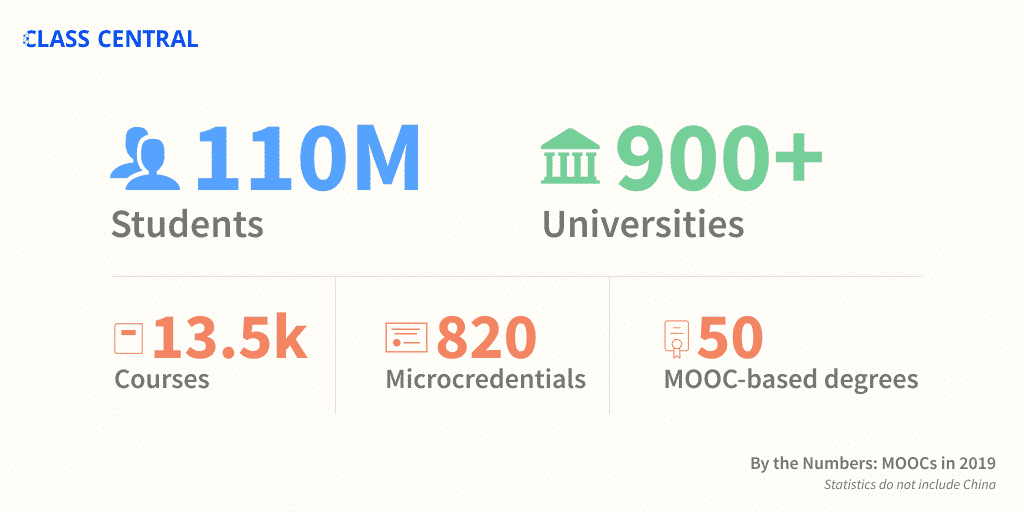
5. Individual study.
It’s also possible to access high-quality individual tuition online. This is most common with language learning – many students practice their new language with a tutor through a video call. These tutors are often part of an agency that regulates their quality, but you can also find tutors who work for themselves.
An individual study is best for students who know what they want out of tuition. Do they want to learn a new language, or perfect some issues they’ve been having with their maths course? It’s very similar to hiring a private tutor in person and should be seen as serving the same purposes.
What does online learning involve?
Now we’ve had a look at what sort of things you can study online, let’s take a look at what exactly it involves. No two courses are the same, and not every tutor will use the same online learning tools. Some prefer to use synchronous methods (all fellow students learning simultaneously) and others prefer asynchronous ones (people learning when they’re available, rather than all together). That said, here’s a quick rundown of some of the main things to expect.
1. Pre-recorded lectures.
This is what many people think of when you mention online study. Sitting at your desk, watching someone stand in front of a whiteboard and give a traditional lecture

This teaching style is everywhere – if you’ve ever watched any TED talks, you’ll be familiar with it. Pre-recorded lectures are great for asynchronous learning as the teacher can record the talk, upload it, and then students can watch it whenever they’re available. Since MOOCs are open to a global audience, this is one of the teaching methods those courses use a lot.
Pre-recorded lectures can also be video snippets of a teacher talking directly to the camera, or narrating over something on their screen, rather than a separate whiteboard. If you’re learning how to program, a lecture might involve recording their code editing software as they talk through what they’re doing.
2. Live video calls.
While many degrees involve lectures, they also build in seminars and one-on-one tutorials. This is where live video calls come into play. They require everyone in a class to be available simultaneously, so aren’t as well suited for MOOCs – but are excellent for undergraduate and postgraduate degrees.
Video conferencing allows students to communicate both with each other and their teacher in real-time. It’s great for arts and humanities subjects, where discussing the arguments is a vital part of education. It can also help students feel more connected to one another, which is very important for what can otherwise be an isolated course
One-on-one calls are also a nice way for tutors to provide feedback or go through more complicated aspects of the course. Many students worry that distance learning can lead to a lower quality experience, but video calls are a great replacement for in-person tutorials. Many teachers even have an online equivalent of office hours, where you can chat with them about whatever you need.
3. Discussion forums.
Discussion forums are kind of like the asynchronous version of video calls. They’re a place for students to discuss the classwork and related topics. They can also help with socialising, especially if you have a dedicated ‘off-topic’ board.
They’re worth having, even if you have video conferences – they’re great for students who might need more time to gather their thoughts, or are simply a bit too shy to speak up. They can also reduce tutors’ workloads, as other students will often answer minor questions that get posted. That, and the fact they can be referred back to whenever necessary, makes them a beneficial learning tool.
4. Online resources – ebooks, journals, etc.
Even with these new technologies, you still need access to books. Most courses will do one of two things. Either they’ll directly provide you with everything you need (usually through a learning portal), or they’ll give you access to their online collections. This can include ebooks, journals, video tutorials, and other online resources.
It’s also easy enough to google your topic area and find curated reading lists and other online resources – though this should be done alongside the recommended course materials, not instead of them!
5. Learning platforms.
Most online courses will have some kind of central learning platform. This is usually where discussion forums and e-resources are hosted, and where you can submit finished work. Universities often use tools like Canvas (not to be mixed up with Canvas Network, a provider of short courses) and Blackboard, but there’s a range of options available.
Having a central learning platform is really helpful for students, as it means there’s a one-stop-shop for any questions or concerns they might have. Think of them as the virtual equivalent of the campus – they’re the place everything is hosted, and you need to know your way around!
Pros of online learning tools
There are many positives to using online learning tools – that’s one reason distance learning continues to grow in popularity! It’s also why so many schools have adopted online learning techniques to deal with the Covid-19 pandemic.
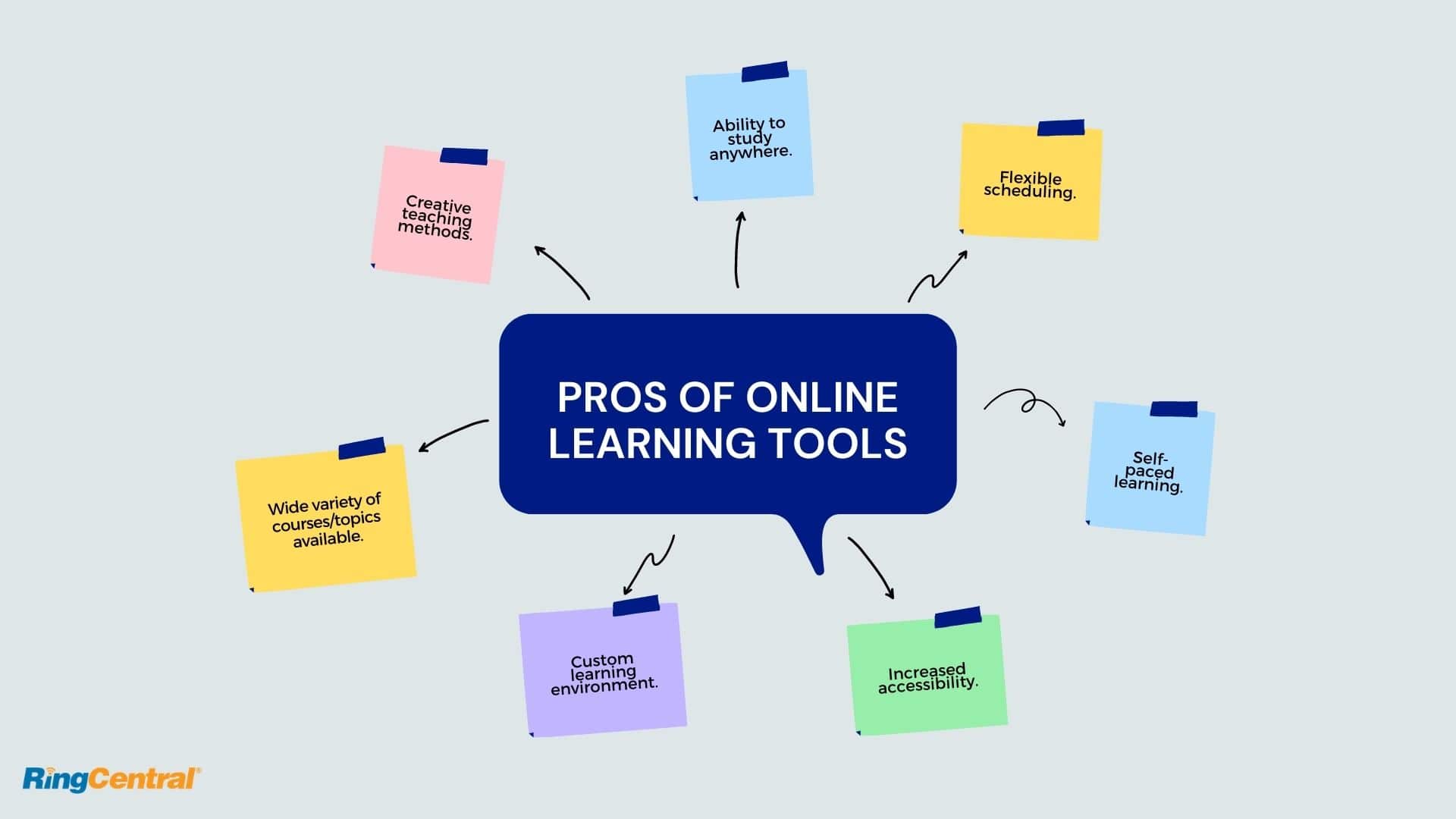
1. Ability to study anywhere.
One of the main benefits of using online learning tools is the ability to study anywhere, at any time. Rather than finding new accommodation in a new city, you can simply log on to your computer and be ready for class. This is particularly great for students with other commitments – whether that’s a job, caring for someone, or even just a rental contract they’re locked into.
You’re not just restricted to your home, either. Unlike traditional learning, it’s easy to take a holiday in the middle of the term as you can still attend classes and complete your assigned work. Imagine being able to relax on the beach all morning before logging in for a lecture after lunch, having an hour chat, and then heading out into a beautiful historical town. This aspect of online study means you can get a high-quality education and enjoy travelling, too. That could provide the perfect compromise between a degree and a gap year!
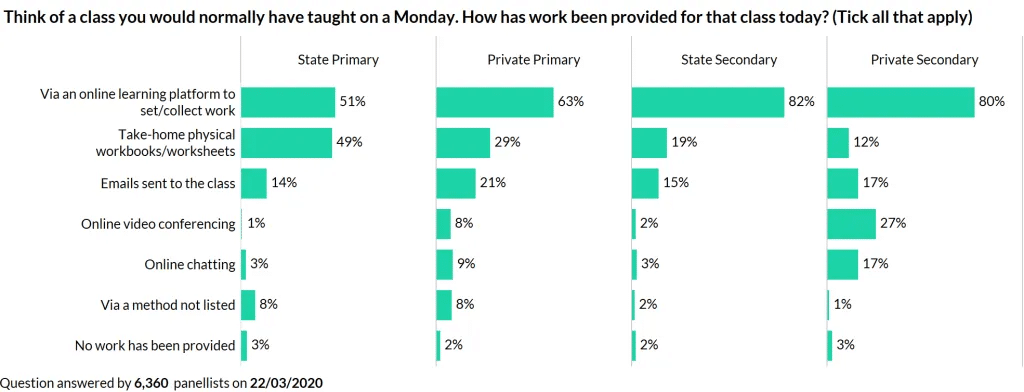
2. Flexible scheduling.
As well as the ability to study anywhere, you can study at any time – mostly. Learning platforms are accessible 24/7, so as long as you make time for synchronous studying (mostly video calls), the rest can be done whenever you want.
This isn’t just advantageous for people in different timezones. If you have a job you don’t want to leave to advance your education, and you can simply work alongside it – perfect for professional development courses. It also suits people who work best at different times of the day. Even with video calls, there’s no commute involved, so that 9 am class will feel less early as you can roll right out of bed and get started.
3. Self-paced learning.
While video calls require you to keep pace with other students, the rest of the online tools you’ll be using are designed to let you work at your own pace. Whether that’s cramming a lot of reading into a single day or spacing it out over a week, you can build a schedule that works for you, rather than keeping pace with other people.
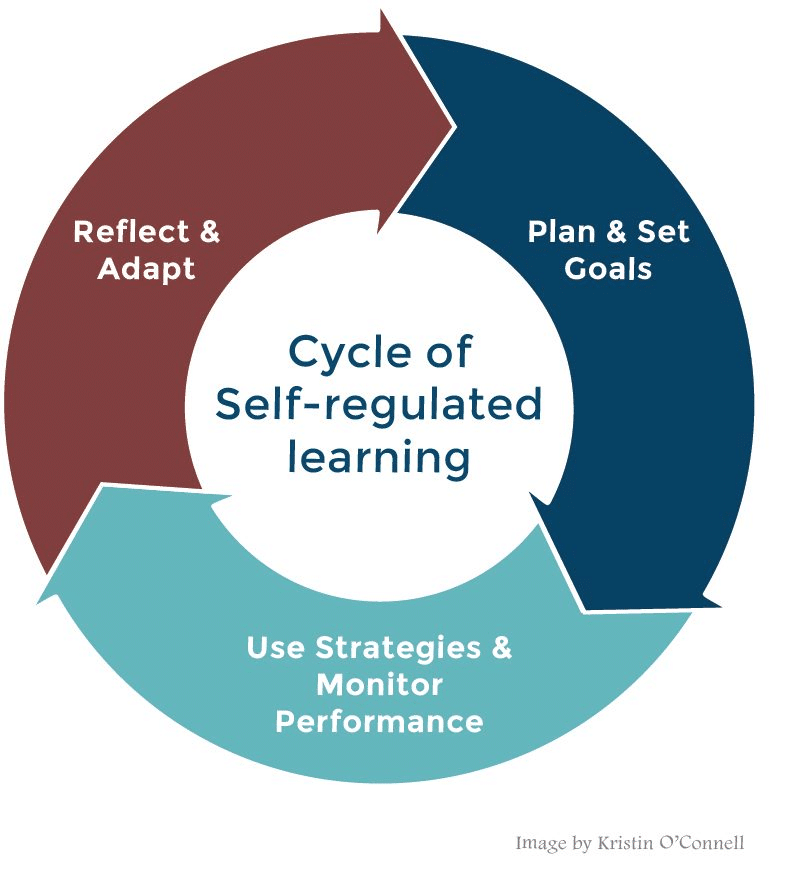
Tools like discussion boards mean you don’t need to respond straight away to questions and conversations. Instead, it’s easier to take time to think about and research what you might want to say. This removes any pressure of having to know things instantly.
Of course, there will still be deadlines – many online courses require work to be submitted through their learning platforms. These platforms will close their submission form at the assigned deadline. Luckily, programs like Canvas allow tutors to re-open it for individual students, so it’s worth talking to your course leader if those deadlines seem challenging.
4. Increased accessibility.
Higher education can be inaccessible for many, for a variety of reasons. Physically disabled students will face extra challenges on campus, especially with historical buildings that may not be well-equipped. Students with mental illnesses may find certain teaching methods particularly challenging. For instance, it is expected to respond to a seminar can be incredibly hard for those struggling with anxiety. Chronic illness can lead to students having to miss sections of the course without notice, and even at excellent universities, these needs aren’t always accounted for.
Distance learning may not resolve every problem, but it opens up an alternative that is much more accessible. Physically disabled students no longer need to contend with a campus, instead of working from their own home. Students with mental illnesses may find some of the online tools allow them to shine – that anxious student from earlier may be quiet in video calls but can express themselves more fully on a discussion board. While chronic illness will remain unpredictable, some of its symptoms can be mitigated by reducing the amount of effort the student must put in to study. Watching a lecture in bed is much more accessible than having to get public transport across town.
How this UK Primary School Is Keeping its Students and Staff Engaged During the COVID-19 LockdownRead the case study
5. Custom learning environment.
Different students work best in different ways, and classrooms aren’t necessarily the best for everyone. The requirement to sit straight-backed in a chair and take notes on a small desk for lectures isn’t most people’s ideal environment, after all.
Students – and tutors! – can build a workspace that suits their needs. Whether that’s a standing desk with a bookcase right beside it, a floor desk with the window behind, or even a trip out to a coffee shop, it’s easy to adapt. People who work better whilst pacing can do so, without distracting those who need a still, quiet space.
This custom learning environment doesn’t just exist in the physical world, either. Tutors can customise their learning platforms to work for them, whilst students can choose how best to store resources and organise their digital files.
6. Wide variety of courses/topics available.
To justify running a course at a university or organisation, there needs to be an interest. Without a certain amount of students joining, there’s no reason to host it. However, with online courses, it’s much easier to provide a large range of subjects, or short courses to complement longer ones.
The wider range of students out there (after all, there’s a global audience) and the lack of necessity to book physical locations means it’s much easier to run courses on niche topics. Tools like video recording software mean that you don’t need to do it again once you’ve delivered a lecture. This ability to re-use aspects of a course makes it easier to justify having smaller groups, as there’s less investment once it has been run once.
This is particularly noticeable with MOOCs, where the course content is pre-written, and a lot of the ongoing interaction is with other students. The ability to host short courses – sometimes a weekend, a couple of months – also means it’s easier to focus on particular topics rather than try to teach to a particular degree’s curriculum. Some great examples of things you can learn on Coursera include:
- Biostatistics in public health
- Photograph basics and beyond: from smartphone to DSLR
- Fundamentals of project management and planning
- Magic in the middle ages
- High impact business writing
- Spanish for successful communication in healthcare settings
- Story and narrative development for video games
- Dynamic public speaking
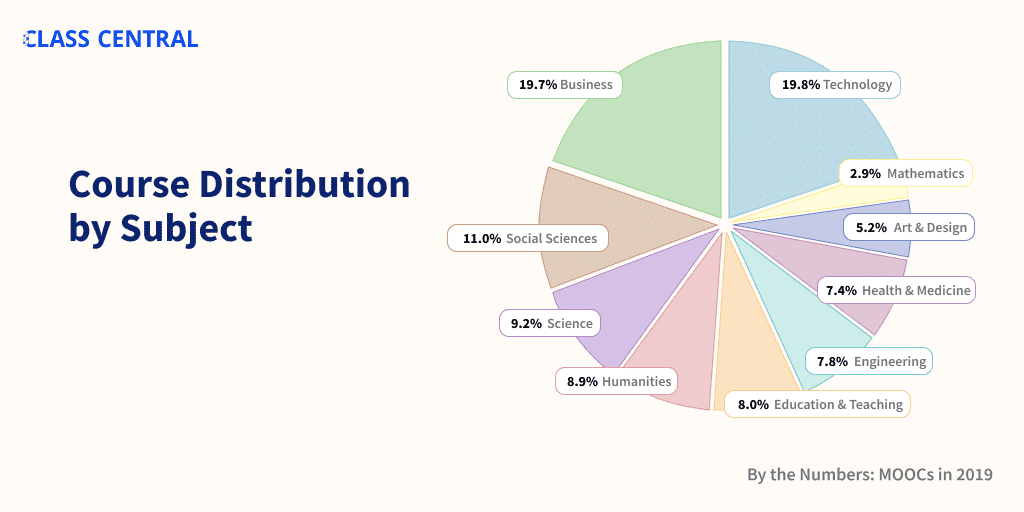
As you can see, there’s a huge variety on offer. Whether it’s professional development, academic curiosity, or just wanting to try something new, it’s easy to find a course to suit.
7. Creative teaching methods.
Online learning tools allow tutors to try out more creative methods than the standard lecture. Whilst, not every tutor will do this (and let’s face it, not every tutor should), those who know what they’re doing can really excel.
Tutors can provide a mix of multimedia resources – video, audio, and interactive content – either designed by themselves or from specialists. This means that different learning styles can be accommodated. Visual learners may rely heavily on infographics, video, and screen share, while audio learners will excel at podcasts, lectures, or recorded interviews.
There are many great things that you simply wouldn’t be able to do in a physical classroom – create customised interactive quizzes and flashcards, encourage collaborative virtual note-taking, or set tasks involving gamification instead of standard homework.
Cons of Online Learning Tools
Of course, every new tool has a downside. You may have noticed that many of the advantages involve a certain type of learner – at least a teenager, more likely a young adult. Primary school students will encounter more of these disadvantages. That’s not to say that online learning doesn’t suit them – many talented teachers are making it work – but there are certainly more challenges involved!
1. Reliance on technology.
Online learning tools are inherently reliant on technology. They need certain hardware, a reliable internet connection, and often, access to particular software. Many students simply won’t have the budget for this – we mentioned earlier that a pro is increased accessibility in some areas. Still, it does come at the cost of inaccessibility elsewhere.
Students who rely on lip-reading may find the lag between audio and visual challenging, and without accurate captioning may find themselves less able to engage than in-person. It can also be overwhelming for autistic individuals or others with sensory processing issues, especially if other students don’t have their microphones muted or there’s a lot of visual stimulation happening at once. For instance, needs that were previously being met, providing hard copies of texts in braille – are no longer being adjusted for.
The biggest cause of inaccessibility is finance – if a student cannot reliably access the technology needed, they’ll be at a disadvantage. Covid-19 has made this even more challenging, as students who may have previously been able to take advantage of libraries, coffee shop wifi, and other facilities are no longer able to do so.
Of course, even for students with the correct hardware and software, it’s not always simple. Internet connections can go down, video call software can freeze and crash, and other technical issues can occur. Not everyone is confident with technology, and much older, or younger students might struggle with the programs required. Distance learning courses must accommodate and be considerate of this. Otherwise, they risk losing students.

2. Requires self-motivation and discipline.
Whilst flexibility is an advantage, and it comes with a requirement for self-motivation and discipline. For many students, the in-person university starts to hone these skills within a support system. Switching to online study can make it far easier to get distracted – there’s no longer the need to show up in-person to a lecture physically, and all your work is done on a machine that is filled with possible distractions. It’s hard to stay productive when you’re anxious, and the current situation is definitely making that harder to avoid.
This worsens when you think about younger students – let’s face it, there aren’t many seven-year-olds with the motivation to do a full day of schooling sat at their desk!
For some students, this won’t be a problem. However, many simply don’t have the discipline yet and will struggle. Online courses aren’t the best way to learn these skills – they benefit from students already having them. That’s not to say there isn’t support, as many tutors will be willing to aid students who are willing to apply themselves. However, it’s a challenge worth acknowledging, and something new students need to be prepared for.
3. Lack of social aspects.
For many young adults, the university is the first time they move away from their home towns and families, and start to find their own way. Many universities sell the social aspect of their degrees as much as the course content, which is much harder to do for online programs. Whilst it is possible to host meetups and social events online, it’s not the same as being on campus with thousands of students the same age.
For some students, this won’t be a problem, but many may find it isolating and more challenging than expected. We know that remote workers find isolation one of their biggest problems, and it’s likely to be the same for those studying remotely too.
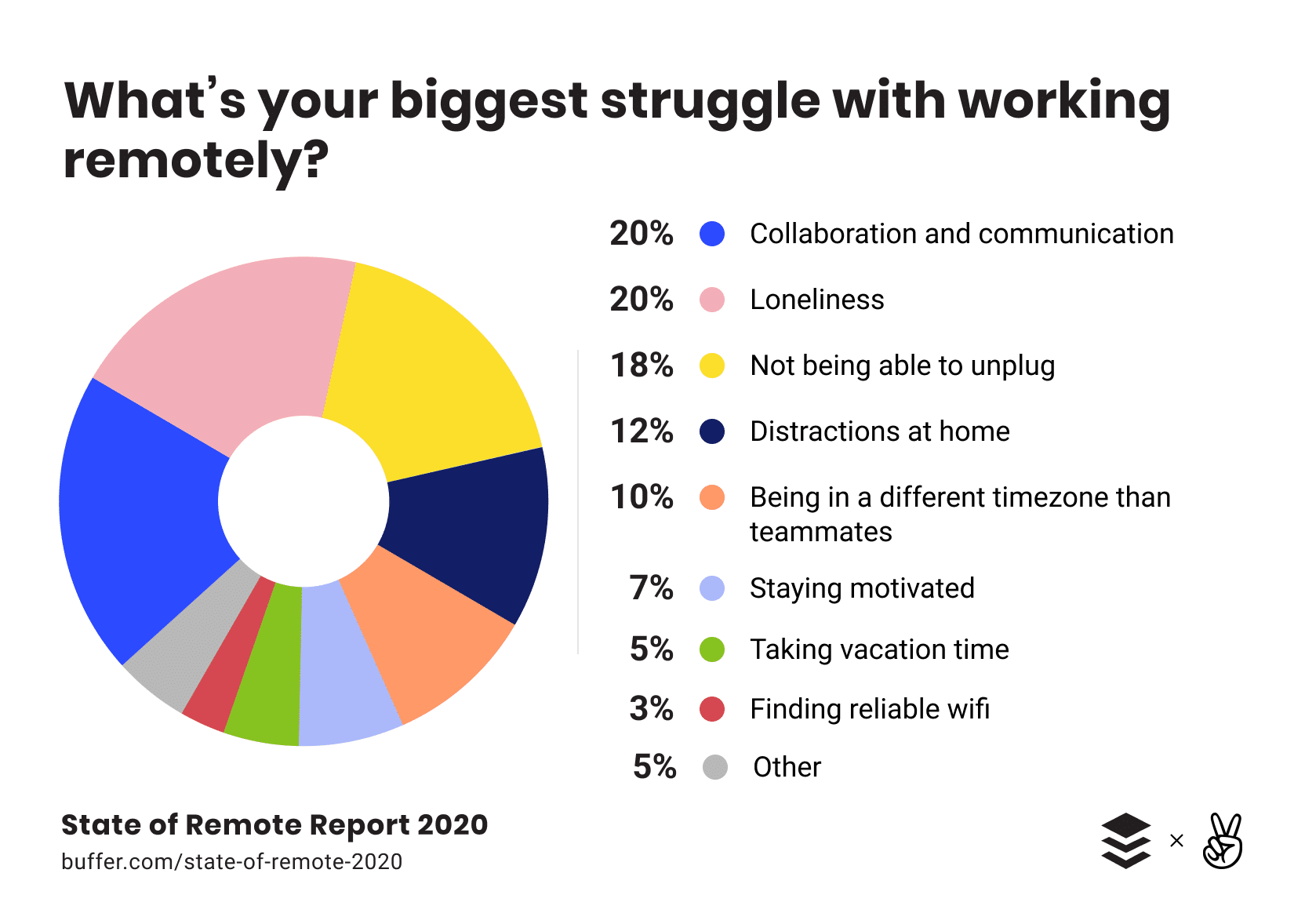
This is an even bigger problem for younger students. Whilst university-age adults are likely to have social circles and experience already, younger students – especially those between five and 11 – rely on school for a lot of their socialising. There’s the potential for them to miss out on developing vital social skills. Whilst online friendships are just as valid as in-person ones, an absence of physical closeness may prove difficult. This is especially likely with the pandemic, as children will be going from having those experiences in-person to moving online.
4. Potentially inexperienced teachers.
We’re all familiar with the university lecturer archetype, who is amazing at research but terrible at teaching. Online learning has the potential to exacerbate these issues, where even good teachers might find themselves struggling due to the new format.
Not everyone’s teaching style translates well to the virtual – it’s a learned skill, and one that not all tutors will have had a chance to learn. Teaching in a video meeting filmed with various snippets of your students’ lives – whether it’s their face, the top of their head, and the ceiling or their interrupting pet – is very different from a classroom or lecture hall.
Excellent, interactive lecturers may find themselves stifled by the need to pre-record without the usual class input to bounce off. Those who are fluent in-person might find themselves stumbling as they attempt to show off slides in a video call.
Not to mention the risks of teachers being inexperienced with technology. If they struggle to upload necessary resources, aren’t sure where to download your submitted papers from, or simply can’t work a discussion forum, it’s going to leave students with a worse experience than in-person. It can already be tricky to stay engaged in online meetings, so adding more distractions will only make this worse.
Luckily, this downside is one that’s fairly easy to improve on – if higher education providers supply detailed training to their staff and have a responsive IT team, this inexperience can often be mitigated.
5. Does not suit hands-on courses/topics.
Whilst many things can move online and be just as good (or better) than in-person, others can’t. Science students will not be able to use dangerous chemicals in their home and miss out on hands-on experiments. Vocational courses like dog grooming, hairstyling, and electrician apprenticeships will have aspects that can be done online, but still, need a lot of physical practice.
Who Can Benefit From Online Learning
Whilst online learning isn’t suitable for everyone, a broad range of people can still benefit from it – concise courses like MOOCs. In general, it’s better suited for older students as they are more likely to have the discipline and motivation to excel. Of course, some younger students will do well, too – just as there are older students that would do better with in-person classes. Here are five particular groups of people whose online learning can really benefit:
1. Professionals looking to further their careers.
Professional development is a great reason to pursue online learning. With a wide range of subjects available, it’s easy to find qualifications specifically suited to your career. Many companies even have a budget specifically allocated for professional development, meaning they may cover some or all costs. It may even be that there are free courses available that will help. For instance, Coursera offers many free IT courses in using Google Cloud, AWS fundamentals, or Excel.
As well as further developing in your chosen career field, online learning is also useful for people looking to make a career change and gain new skills. It allows you to gain relevant qualifications without leaving your current role to do so. Many professionals might already have the skillset to excel in online learning, especially if used to working remotely.
2. Individuals looking to learn a new language.
It can be tricky to learn new languages, especially if you live somewhere that doesn’t have many people offering tuition. Distance-learning makes it possible to opt into classes or individual tuition, often with native or fluent speakers. If you google search for ‘learn [language] online’ you’ll get pages and pages of suitable results.

The most popular language studied on Duolingo in each country.
Learning a language is a field particularly well suited to online learning. Online learning tools such as virtual flashcards and quizzes make it easier to revise and test yourself. The ability to download audio files and work through them at your own pace, meanwhile, increases the options to practice. It’s also far easier to find short courses designed for particular needs – many sites offer courses designed specifically for business communication, rather than everyday use.
3. Individuals with other commitments (especially location-based ones).
For many people, moving away to go to a particular school or university is one of the main reasons they haven’t pursued higher education. This may be because they have a family – elderly parents or young children – a job, other commitments, or simply because they’re settled in one place and don’t want to uproot.
Online learning doesn’t require any change of location, and the flexibility of it also means it can fit around pre-existing commitments with ease. Even hybrid courses are easy to access, as the in-person time is minimal compared to a full-time degree on campus.
4. People looking to gain a more in-depth knowledge of a new subject, but not to a degree level.
Not everyone who wants to study something wants to get a degree in it – or any accreditation, in fact. Many people just want to explore an interest in-depth, and there aren’t very many opportunities to do so offline. Some colleges and universities offer evening classes, but these are often expensive and require a commitment to set schedules.
Instead, short courses available on different learning platforms are ideal for this sort of thing. Whether it’s learning about a niche aspect of history, practising life drawing, or developing your skills at astrophotography, there are courses available.
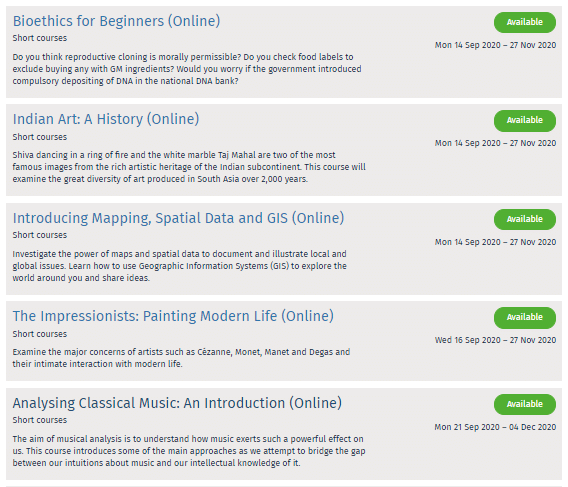
Example courses from Oxford’s Continuing Education department
5. Students with access needs that traditional institutions don’t meet.
Even with modern campuses working on improving their accessibility, there can still be challenges. Old buildings, ill-designed lecture theatres, or tutors unwilling to make accommodations can all hinder education for disabled students. While online study isn’t necessarily the solution (improved on-campus accessibility would be), it can still be a better option for many.
High-quality distance learning courses require less physical commitment, so students with chronic pain and other physical disabilities can spend more time on the actual education part than travel to and from lectures, seminars, and tutorials.
Whilst these are not the only groups who would benefit from online learning, they’re a great example of just how much impact distance learning can have. Anyone with the self-motivation and interest would also benefit, as long as they’re prepared for what it involves.
Types of Online Learning Tools
Different courses use different tools, but there’s a lot of similarities. You should expect to encounter some, if not all, of these types of online learning tools.
1. Learning management platforms.
The most important thing to have for running an online course is a strong learning platform. Many universities already use these, even for their in-person courses, as they’re a great way of sharing resources and accepting submissions. Programs like Canvas allow teachers to upload files, host discussions, send reminders, and accept work. Ideally, you want one that’s optimised for mobile use and many students, will access it through their smartphones.
2. Video conference solutions.
If your course involves any kind of discussion, seminar, or one-on-one sessions, then it’s worth ensuring you have good video conferencing solutions in place. It’s important to check what functionality you want – do you want auto-captions, breakout rooms, and the ability to manually mute people? Security is a huge part of this, too, as you don’t want your students’ data to be compromised or interrupt your meetings. It’s worth investing in appropriate hardware (good lighting, a good camera) to make sure to look your best in video calls too.

3. Messaging apps.
Not every teacher will want to invest in a messaging app, especially those that rely on email, but it’s worth considering. This is especially useful if you want to encourage asynchronous communication between classmates since having a messaging app allows discussions to happen throughout the day. These apps are beneficial when they can be incorporated directly into the learning platform.
Get reliable video conferencing for students and teachers
4. Design tools and presentation packages.
Not every teacher is going to want to design their own resources, but many wills. Having access to good design tools is a great way to avoid sending out dozens of black and white text documents, instead of using infographics and worksheets. Presentation packages are helpful here, too, especially for those who prefer to share slides rather than recordings of themselves.
5. Interactive activities.
This is an inclusive category and overlaps a little with the next one. Whilst they’re useful for all forms of online learning, it’s beneficial for younger students who aren’t prepared to sit and listen to extensive lectures. It includes:
- Quizzes
- Games
- Practical projects (i.e., coding projects)
- Simulations
- Augmented reality apps
- Read along with texts
6. Resource collections.
In a way, interactive activities like those above are a subset of this – resource collections. Exactly as it sounds, this is a curated collection of resources that you can either use as part of a lesson or provide access to for further reading and homework. Relevant resources include:
- Educational videos and animations
- Audiobooks
- Free to access texts
- Journal collections (especially if your students have free university access to them)
- Worksheets
- Multimedia posters
- Printables
- Online study materials like StuDocu
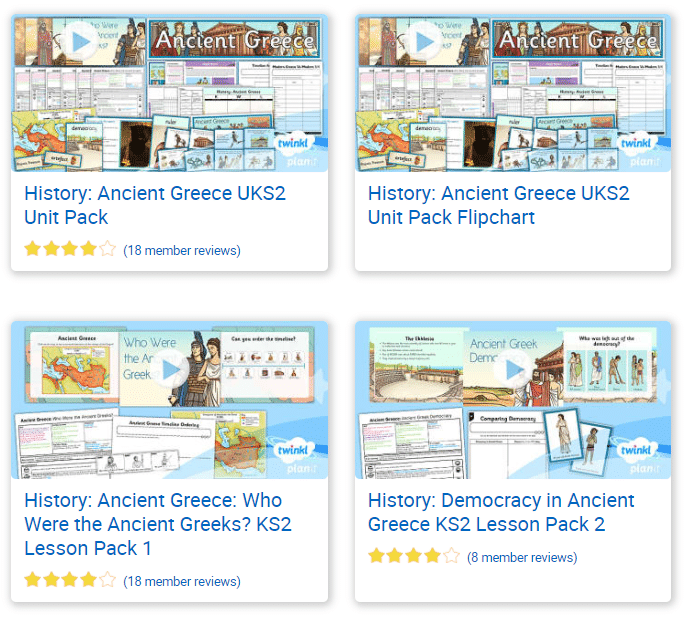
Just as you would have these resources on hand in a classroom, having resource collections to draw upon makes online study much easier, and means there’s less pressure on teachers to create everything from scratch.
7. Shared storage.
If there are specific resources you want your students to access that aren’t usually hosted online – perhaps a high-quality scan book chapter, or a self-recorded video – then you need some way to share it with them. Rather than manually emailing it to everyone, cloud storage platforms allow you to upload it, and then students can download it as needed.
Even with learning management platforms, there can be file limits so it may be worth investing in a separate storage solution if you plan on sharing a lot of things.
8. Recording tools.
Pre-recorded lectures require a different set of tools for video conferences. If you want to record yourself, you’ll need a camera (though a built-in webcam can do the trick if need be) as well as software to capture and edit the files. If you want to have audio over the top of a presentation, you’ll need audio capture software and editing tools.
Figuring this out can be challenging, especially with the Covid-19 pandemic forcing academics to adjust to online learning very quickly. It’s always worth seeing if you can find (or ideally, be provided with) training to improve these new skills.
Checklist For Remote Learning Tools
When choosing the remote learning tools to use, there are a few things that you need to keep in mind. While some will be specific to the class being taught (such as what topics you need the resource collections to cover), many are general points worth taking into account.
1. Security.
Anything being used in online learning needs to be secure. This is especially important where children are involved. Check for appropriate security certificates, and whether they talk about how they use any data gathered. Whilst this applies to all learning tools, it’s especially relevant to video conferencing solutions.
Covid-19 led many organisations to use Zoom, where Zoom bombing (unauthorised users accessing a call and being disruptive, sometimes sharing disturbing material) has been a real problem. Instead, you’ll want to use platforms with stricter security to avoid putting students at risk.
2. Ease of use and accessibility.
Not everyone who signs up for online learning has the same level of technological ability. This is especially prevalent in the pandemic, with young children being taught online. Any tools should be easy to use and have good accessibility options (i.e., colourblind mode, adjustable font size). It’s also worth ensuring they’re easy for tutors to use, too. There’s nothing worse than a lecture in which the lecturer keeps stopping and starting because of tech issues.
3. Availability of tutorials.
This is similar to the above point. Any learning tool you use should have tutorials – whether they’re official ones on their website, or easy to find through google. While unofficial ones can be a good alternative, it’s worth watching them make sure the content is suitable. Having tutorials available means, you can use slightly more complex tools, without worrying about leaving students or staff behind.
4. Appropriate topic coverage.
The best-designed tools may not always have the content needed for your course. This is especially relevant for resource collections and interactive activities, though it applies to other categories too. After all, there’s no use investing in a subscription to a language learning platform if it doesn’t include the language you’re teaching.
5. Cost.
Finally, there’s the cost. Many tools provide versions free to schools and universities to help them adapt to the ‘new normal’, but this isn’t guaranteed to last. It’s worth comparing the price of the tools you want, and weighing them up against the budget before committing – even if one is free at the moment. You don’t want to start a term with one tool and have to transfer to another because of a price increase.
Top 20 Remote Learning Tools
Here are the top twenty tools for online learning – we’ve included a mix of tools designed for younger and older students.
1. Google Classroom
Google classroom uses pre-existing Google accounts to sign in. It’s suited for solely online learning or the hybrid model and has video conferencing built-in. Teachers can set up classwork, communicate with students and parents, and accept submissions. It can be configured to work with other apps, including some of the others on this list.
2. G-Suite for Education
Another Google product, there’s a specific version of G-Suite designed for education. With access to tools to create text documents, spreadsheets, and presentations, it’s perfect for encouraging collaborative work among students. It integrates with Google Classroom, though can be used separately – and it includes cloud storage too.
3. Canvas
Not to be confused with Canvas Network, a MOOC provider, a learning management system (LMS) used by many UK universities. It’s open-source and offers a lot of functionality, as well as having comprehensive user guides available. It can host conferences, gather analytics, store feedback, show modules, and much more.
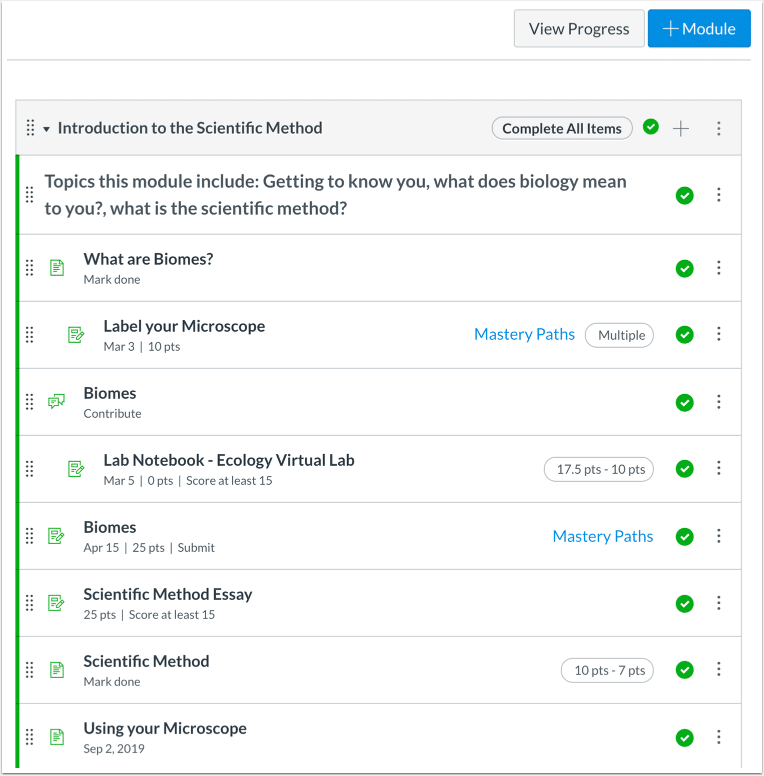
4. Khan Academy
Khan Academy offers mathematics courses, suitable from age five all the way up to university level. This is what it’s best known for, but it also provides courses on science, computing, arts and humanities, economics, reading, and life skills. It’s great either as part of lessons or for setting as homework.
5. Twinkl
Offering curated packs to help during the Covid-19 pandemic, Twinkl provides resources for KS1, 2, and early learners and the core subjects (English, Maths, and Science) KS3 and 4. They also provide resources for parents, which is especially helpful when teaching younger students.
6. Padlet
Padlet is a productivity software handy for educators. It can be used to create online boards for lessons, incorporating a multitude of resources. You can embed content from other platforms, meaning students don’t need to click away to access them. It’s also accessible on mobile, and schools can remove access to social features to increase security.
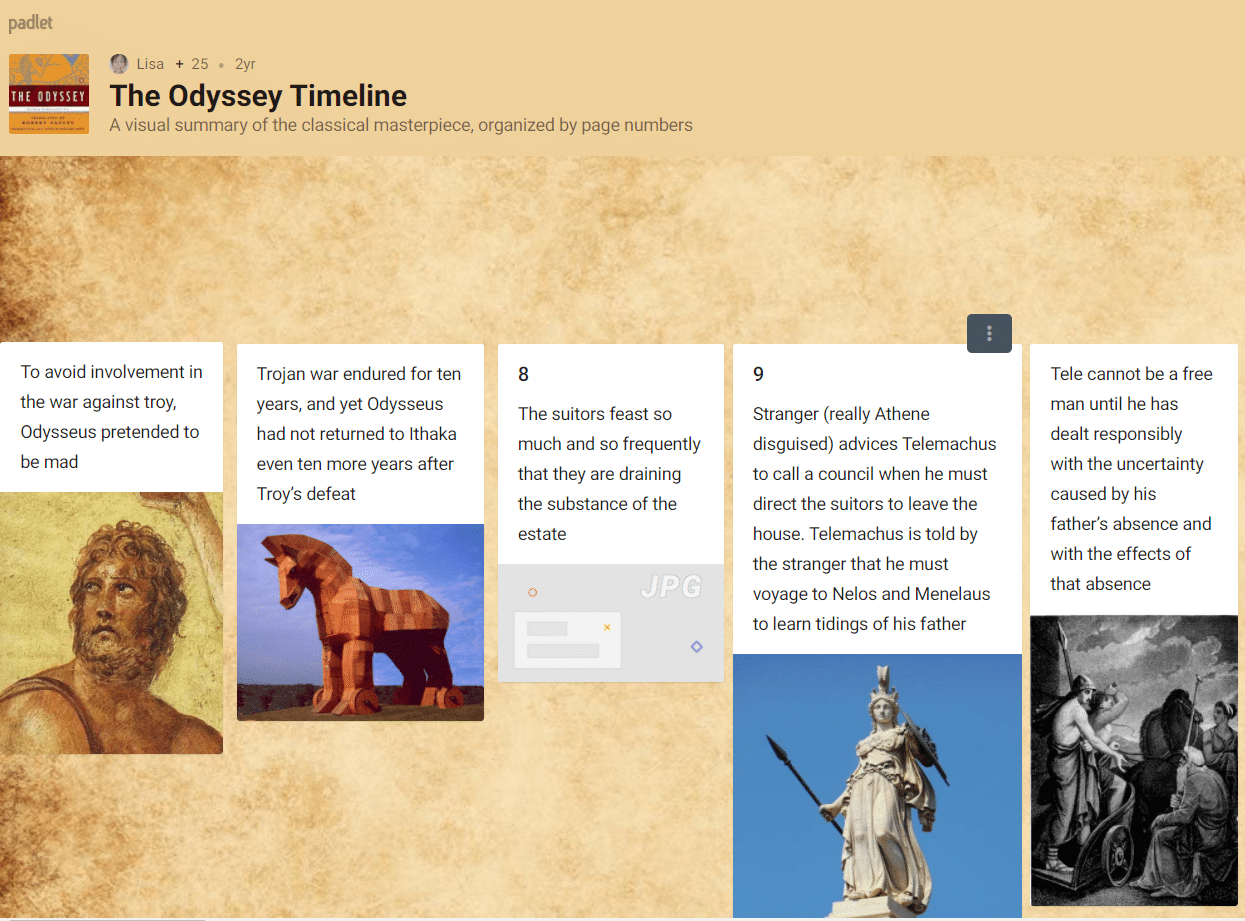
7. Canva
Canva – not to be mixed up with the earlier Canvas – is an online graphic design platform. Often favoured by businesses for its social media-specific templates, it’s brilliant for any teacher trying to whip up some visual aids quickly. It’s also worth suggesting as a tool for students to use if you want them to make posters, presentations, or other documents.
8. SeeSaw
SeeSaw has a free basic package, and then a subscription model for extra tools. The full version includes the ability to create activities and manage them in a virtual school library, school-wide analytics, student-specific portfolios, private teacher notes, and more.
9. Purple Mash
This is teaching and learning software designed specifically for KS1 and KS2. Focused on teaching computing and digital skills, it’s a worthwhile addition, especially if you find younger students are struggling with the technical skills to engage with online learning.
10. Learning By Questions
This classroom app can also be used for remote learning. It has curriculum-based question sets that don’t require manual marking and can provide instant feedback. Aimed at primary and secondary school students, there are more than 60,000 questions included, with the ability to add in your own, too.
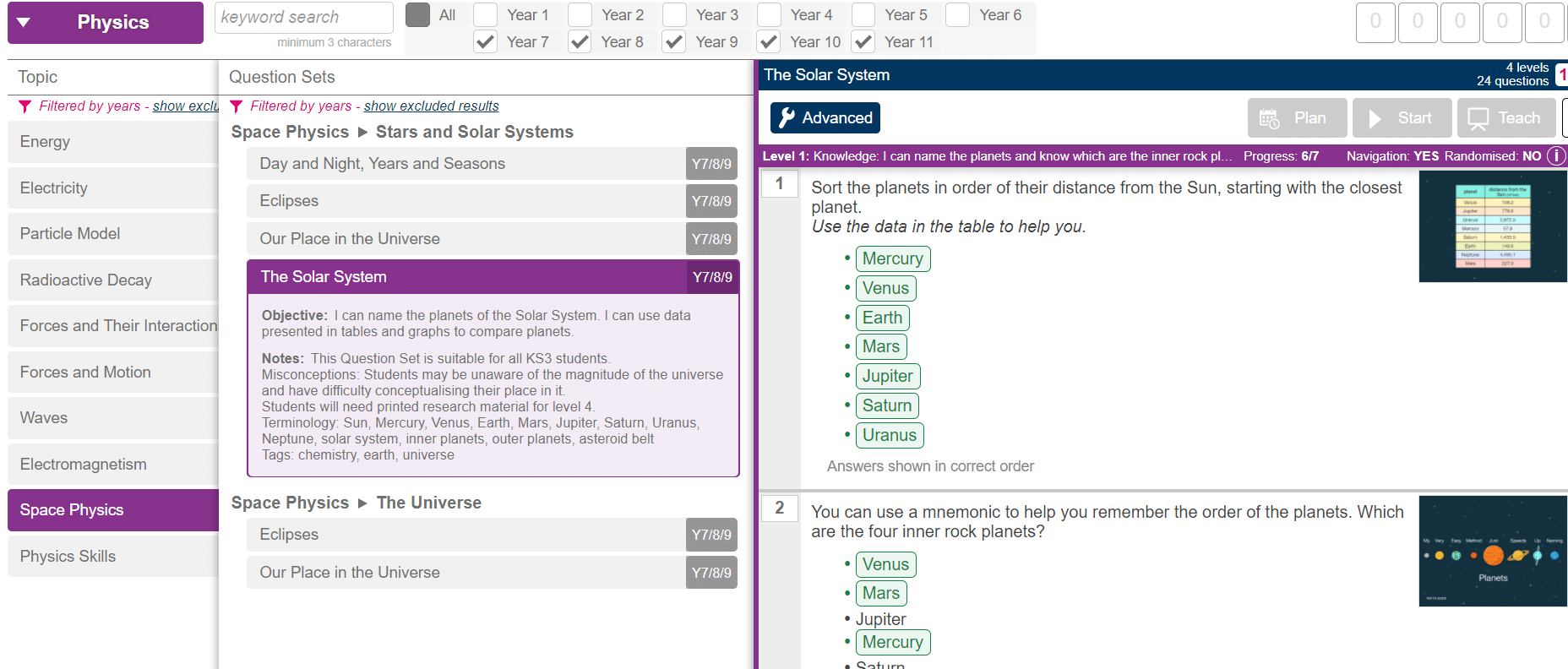
11. Audible
Most of us are familiar with Audible as a paid-for service for audiobooks. However, they also have a free for kids section while Covid-19 is happening. It’s definitely worth providing this as a resource to parents if you’re working with younger children.
12. Internet Archive
The internet archive is a non-profit library containing books, software, films, music, and websites. There are pre-existing collections to help you narrow down resources. It’s worth having to hand any time you need to provide resources, especially for older students, as it can keep costs down.
13. Project Gutenberg
Similar to the above, Project Gutenberg provides copies of books. In this case, it’s out of copyright, and unlike the Internet Archive, they’re often provided as text, not scans – making them easier to search and reference. It’s instrumental if you often reference older works.
14. BrainPOP
Brainpop is an animated educational site with games, activities, and short films. There’s also BrainPOP Jr (suitable for 3-5-year-olds), BrainPOP ELL (English language learning) and GameUP (educational games). A recent study showed a statistically significant improvement in schools that use BrainPOP.
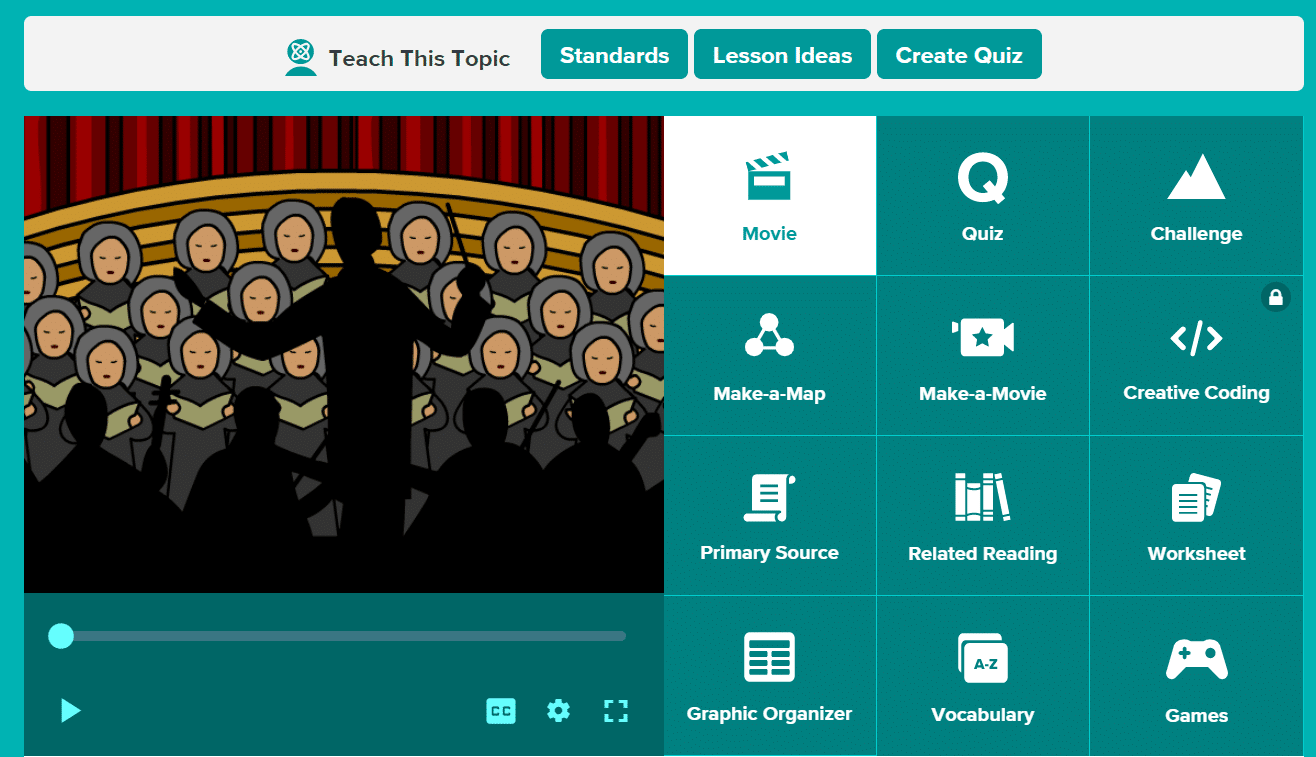
15. Flipgrid
Flipgrid is suitable for all age groups. You create a topic, add relevant resources, and then share it with students. You share the link, and then learners can join by recording a video with the in-app camera. This camera allows them to add text, upload clips, and add emojis. It’s a great way to capture that in-person discussion feel, just in an asynchronous way.
16. Youtube Teachers
Youtube has a wealth of videos on many topics – but it can be hard to moderate them and check they’re accurate and suitable. Youtube Teachers have curated playlists that make a good starting point for figuring this out. You can also find well-renowned channels like PBS Kids or NatGeo Kids.
17. Edpuzzle
This is a useful follow-on from YouTube – it’s an online learning tool designed to let teachers find videos, add questions, and quickly assign them to their students. Unlike relying on YouTube, you can use EdPuzzle to check they’re actually watching the content assigned.
18. Audacity
Audacity is a free, open-source recording and editing software solution. It’s been around for twenty years and is still one of the best free options out there.
19. Zooniverse
This isn’t necessarily designed as an online learning tool, but it’s worth adding to your toolkit anyway. Zooniverse consists of research projects that need volunteers to classify data – whether that’s photographs from live animal traps, historical texts, or biological imaging. It can make for some interesting homework assignments, and there are specific educational guides available.

20. Dropbox
Dropbox is a cloud-based file hosting service. It’s a great way to upload resources and share them with students, without making them publicly available. There is a free version, but you might need to invest in the subscription if you use it a lot.
Tips For Remote Learning
We’ve mentioned a need to be self-motivated and have excellent discipline before, but you can do some other things to make the online learning experience better.
1. Create an appropriate study space.
Setting up a work from the home office is the best way to do this. This might be tricky if you don’t have a lot of space, but even just creating a specific area where you can study is a great way of making sure you’re in the right frame of mind. Even if it’s just a corner desk or sitting on your bed, try to reduce distractions as much as possible – no music, no other apps open, and your phone on silent.
2. Familiarise yourself with the technology.
Rather than figuring out the technology in your first class, test it out in advance. If you can’t (perhaps it’s a video platform or you don’t have access), spend some time looking up tutorials and user guides. This way, you can get started straight away instead of wasting time with tech issues. It’s something that slips many peoples’ minds, but avoiding work from home disasters goes a long way to helping you succeed in online learning.
3. Have a routine.
The flexible nature of online learning is one of its main advantages, but that doesn’t mean you shouldn’t have a routine. Time management is even more important when you don’t have in-person contact hours. Whether you choose to study at the same time every day or have a set thing to do before and after, creating a routine is another surefire way of making sure you’re in the right frame of mind to study.
4. Communicate with teachers and other students.
Other students are a valuable part of in-person degrees. It’s not just the networking or academic aspects that are important but also have social connections to people in the same position as you. Take advantage of social media to stay connected beyond just collaborating on work. Equally, teachers are there to help, so don’t be afraid to reach out with questions.
5. Take breaks away from the screen.
Working online all day can lead to eyestrain, headaches, and muscle ache – especially if you don’t have an ideal set-up. Make sure to take regular breaks, not just breaks that involve closing your work and logging into another site. Taking time away from the screen is important for maintaining your health and helping you be productive.
Conclusion
Online learning may be a relatively new form of distance learning, but it’s more than proven how useful it can be. Whether you’re studying this way temporarily due to Covid-19 or your preferred method, these tools can help ensure you have a high-quality experience – whether it’s a full degree or a short course.
Originally published Sep 04, 2020, updated Jan 17, 2023




